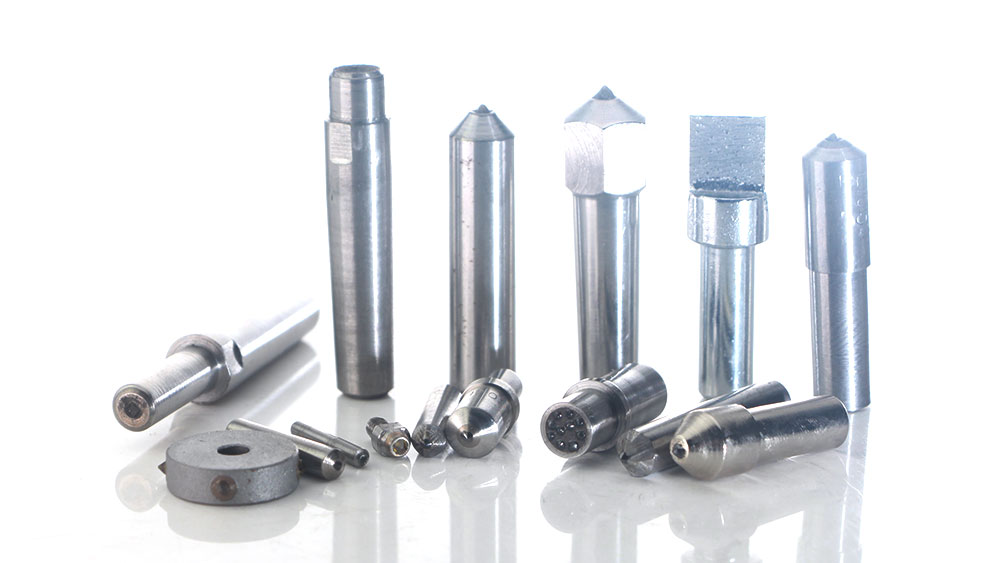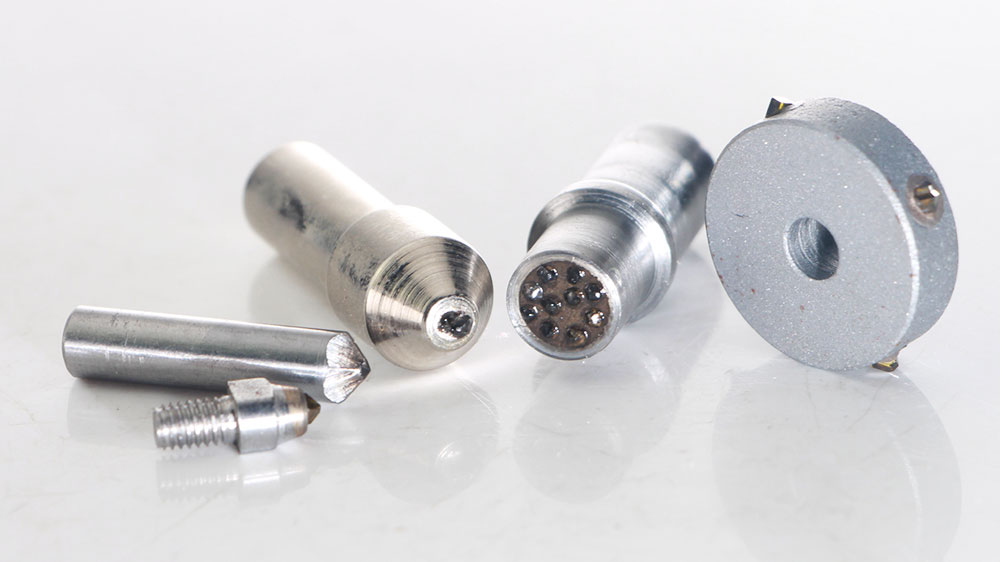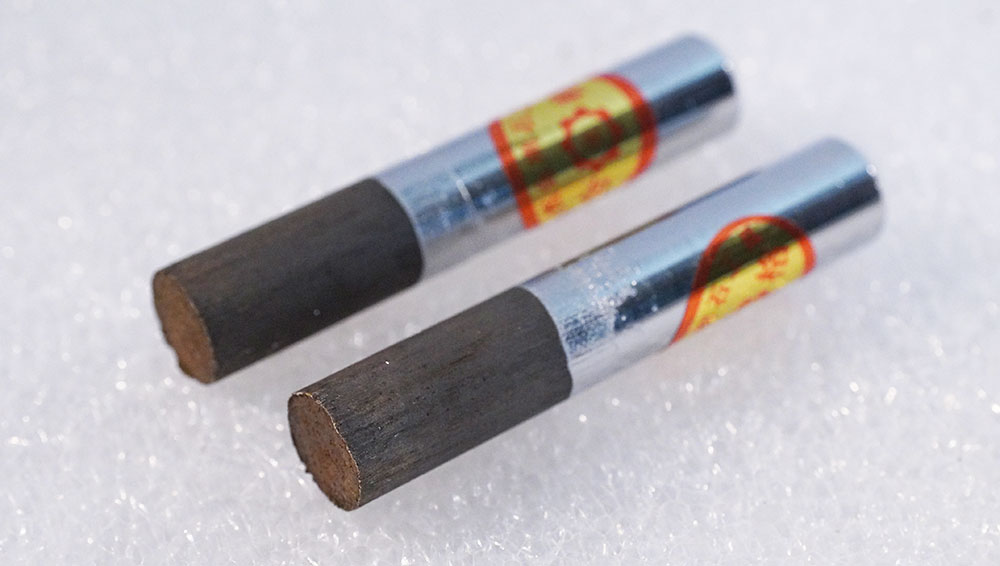Using a diamond truing tool is a critical maintenance task for restoring your wheel’s geometry for effective grinding. The truing process involves making controlled passes with the diamond tool against the spinning wheel. This action creates a flat, concentric surface, essential for any diamond wheel or even a complex diamond grinding wheel.
Proper truing ensures safer operation and superior grinding results. This is a core principle of quality work championed by brands like Aimgrind.
Key Takeaways
- Truing restores your grinding wheel’s shape. This makes it round and balanced. Dressing cleans the wheel’s surface. It removes dull or clogged parts.
- Look for signs your wheel needs service. These include shiny spots, a high-pitched squeal, or strong shaking. These signs mean your wheel is not working well.
- Always wear safety glasses and a face shield. Use earplugs and a dust mask. This protects you from sparks, noise, and dust.
- Position the diamond tool correctly. Hold it firmly. Make light, steady passes across the wheel. This helps you get a smooth, flat surface.
- Regular truing makes your grinding safer. It also helps your wheel work better. This care makes your wheel last longer.
Truing vs. Dressing: What’s the Difference?
To maintain your grinding wheel, you need to understand two key processes: truing and dressing. While people often use the terms interchangeably, they serve different functions. Truing restores the wheel’s shape, while dressing cleans its surface.
A proper dressing procedure exposes fresh, sharp abrasive grains for better cutting. Think of it as cleaning a clogged file. Truing, on the other hand, is like re-shaping the file itself to be perfectly flat.
| Aspect | Truing | Dressing |
|---|---|---|
| Purpose | Restores the wheel’s geometry to make it perfectly round and concentric. | Cleans the wheel’s surface by removing dull or clogged abrasive grains. |
| Outcome | Corrects vibration and ensures the wheel runs true for precise grinding. | Restores the wheel’s cutting ability and sharpness for efficient work. |
Pro-Tip: While they are different, truing your wheel also accomplishes dressing. Reshaping the surface naturally removes the old, loaded layer and exposes a fresh one.
When Your Wheel Needs Service
You can tell your wheel needs attention by observing its performance and appearance. The two most common problems are loading or glazing and becoming out-of-round.
Signs of a Loaded or Glazed Wheel
A loaded or glazed wheel has lost its cutting ability. “Loading” happens when metal particles clog the wheel’s surface. “Glazing” occurs when the abrasive grains become dull and smooth. You need to perform a dressing of your wheel when you notice these signs:
- Visual Cues: You see shiny, metallic streaks or patches on the wheel’s face. The workpiece may show burn marks or a poor surface finish.
- Auditory Cues: You hear a high-pitched squeal instead of the normal hissing sound of healthy grinding.
- Feel: A glazed wheel will feel smooth to the touch instead of abrasive.
Signs of an Out-of-Round Wheel
An out-of-round wheel is no longer perfectly circular. This is a serious issue that impacts both safety and quality. The most obvious sign is excessive vibration during operation. This vibration makes it impossible to achieve a precise finish and can be dangerous. If you feel your grinder shaking more than usual, it is time to stop and inspect the wheel.
Choosing the Right Tool for the Job

Selecting the correct dressing tool is essential for achieving a perfectly true wheel. The right tool depends on your grinder type and the job’s demands. For any task, using high-quality diamond tools ensures precision and durability.
Diamond Dressers for Bench Grinders
You have several options for dressing a bench grinder wheel. The most common types of diamond dressing tools are single-point and multi-point dressers. Each has a unique construction.
- Single-point diamond dressers: These use a single, natural diamond point. They are great for dressing straight wheels and simple profiles.
- Multipoint dressers: These tools use several diamond points that work together. They can be used completely without needing to be reset.
- Blade dressers: These look like a chisel and present a line of diamond to the wheel. They are often used for creating specific profiles.
Tools for Precision Surface Grinders
Precision grinders require specific tools for optimal results. The choice between a single-point and multi-point diamond truing tool often depends on your production volume and needs.
| Tool Type | Ideal Applications |
|---|---|
| Single-Point Diamond | Small- to medium-scale production; Straight, flat surface dressing; Basic wheel dressing. |
| Multi-Point Diamond | High-volume industrial lines; General-purpose dressing; Long-lasting performance. |
For professionals who demand reliability, Aimgrind’s specialized Diamond Tools are an excellent choice. Their design focuses on precision and longevity, making them ideal for everything from a standard diamond wheel to a complex diamond grinding wheel.
Selecting the Right Grit
The grit of your dressing tool also matters. A coarser diamond grit removes material faster, which is useful for aggressive dressing. A finer grit provides a smoother finish on the wheel’s surface. Your choice affects the final finish on your workpiece. Always match the tool to the specific requirements of your grinding tools and application.
A Guide to Truing Your Grinding Wheel
Now you are ready for the main event: truing your grinding wheel. Following these steps will help you restore your wheel to perfect condition for precise work.
Important Note: These steps are a general guide. You should always consult the instructions from your grinder and tool manufacturer before starting any maintenance.
Step 1: Prioritize Safety
Your safety is the most important part of any workshop task. Before you even turn the grinder on, you must put on the correct Personal Protective Equipment (PPE). Grinding operations create sparks, dust, and noise.
- Eye and Face Protection: Always wear safety glasses with side shields. A full face shield worn over your glasses offers the best protection.
- Hearing Protection: Use earplugs or earmuffs to protect your hearing from the high noise levels of grinding.
- Respiratory Protection: An N95 dust mask will help you avoid breathing in fine particles from the wheel.
- Hand and Body Protection: Wear durable, close-fitting clothing. Leather aprons and cut-resistant gloves can provide extra protection.
Step 2: Prepare the Tool Rest
A secure tool rest is essential for controlled truing. You need to position the tool rest correctly to support your diamond truing tool. Check the gap between the rest and the grinding wheel face. The maximum distance should be no more than 1/8 inch. A wider gap can cause the tool or workpiece to get jammed, which is extremely dangerous. Adjust the rest until the gap is correct.
Step 3: Bring Wheel to Full Speed
Turn on your grinder and let the wheel reach its full operating speed. Never attempt to true a wheel while it is speeding up or slowing down. The wheel must be spinning at a consistent, full velocity to achieve a uniform surface.
Step 4: Position the Diamond Truing Tool
Proper tool position is key to preventing chatter and getting a smooth finish. Place your diamond tool firmly on the tool rest. You should angle the point of the diamond slightly into the wheel’s rotation. A 10 to 15-degree angle is ideal. This “drag angle” allows the diamond to cut smoothly and prevents it from digging into or skipping across the wheel. This technique also helps keep the diamond point sharp.
Step 5: Make Light, Steady Contact
With the tool braced securely, you can now slowly advance it toward the spinning wheel. Your goal is to make very light contact. Listen for the sound of the diamond touching the high spots first. For each pass, you should only remove a tiny amount of material. A depth of about 0.001 inches per pass is a good starting point for effective dressing and truing.
Step 6: Execute Smooth, Controlled Passes
Once the diamond makes contact, move the tool smoothly and steadily across the entire face of the wheel. Do not stop in the middle of a pass. A consistent travel speed ensures an even surface. Moving too slowly can create grooves, while moving too quickly can leave an uneven finish. The goal is a flat, concentric surface on your standard or diamond wheel.
Step 7: Stop and Inspect Your Work
After completing one full pass, move the tool away from the wheel. Turn off the grinder and wait for the wheel to come to a complete stop. Never inspect a spinning wheel. Look at the surface closely. You should see a fresh, uniform texture. Feel the surface (carefully!) to check for flatness.
Step 8: Repeat if Necessary
One pass is often not enough, especially for a wheel that is badly out of round. If you still see low spots or feel unevenness, you will need to repeat the process. Continue making light passes from Step 5 through Step 7 until the entire grinding wheel face is flat and clean.
Essential Safety and Pro-Tips
Following the correct steps is important. Mastering a few key safety habits and professional tips will make your work safer and more effective. These practices protect you and help you get the best results from your grinding wheel.
Always Wear Proper PPE
You must always protect yourself during any grinding operation. Sparks and abrasive particles can cause serious injury. Your face shield is especially important.
- Face Shield: Choose a polycarbonate shield for the best impact resistance. It should have anti-fog and scratch-resistant coatings for clear vision. Look for a shield that meets the ANSI Z87+ standard for high-impact protection.
- Safety Glasses: Wear safety glasses under your face shield. They provide an extra layer of defense against fine particles.
A face shield alone is not enough. You need the combined protection of both glasses and a shield to keep your eyes and face completely safe.
Maintain a Firm, Braced Grip
You need full control over the diamond tool during the entire process. Hold the tool firmly with both hands. Brace your hands or arms against the grinder housing or a stable surface. This firm grip prevents the tool from chattering or being pulled into the wheel. A steady hand ensures a smooth, even surface on your wheel.
Let the Diamond Do the Work
You should not force the tool into the wheel. Applying too much pressure is a common mistake. It can damage the diamond tool and the wheel. Excessive force causes the diamond crystals to break away from the tool, reducing its cutting efficiency and lifespan. Gentle, steady pressure is all you need. The sharp diamond will cut the wheel surface effectively without extra force. This light touch is key to a successful dressing.
Check Tool Rest Clearance
You must check your tool rest before every use. The gap between the tool rest and the wheel should never be more than 1/8 inch. A wider gap can trap the tool, causing it to be violently ejected. Always adjust the tool rest when the grinder is off. This simple check is one of the most critical safety steps.
Regular truing with a quality diamond truing tool is a simple, vital task for any workshop. This important truing process improves your grinding safety and gives you a better-performing wheel. Proper care of your diamond wheel also extends its life, making your grinding work more efficient and precise.
Grind with Passion, Achieve with Aim.
FAQ
How often should I true my grinding wheel?
You should true your wheel whenever you notice excessive vibration. You also need to true it if the surface becomes uneven or out-of-round. Regular inspection before each use will help you decide when it is time.
Can I use the same tool for truing and dressing?
Yes, you can. Truing a wheel reshapes its surface. This process also removes loaded material and dull grains. Therefore, the act of truing also completes the task of dressing the wheel, restoring its cutting ability.
What happens if I don’t true my wheel?
An untrue wheel causes heavy vibration. This vibration leads to poor surface finishes on your workpiece and can be unsafe. It also puts extra stress on the grinder’s bearings, potentially causing damage to your machine over time.
Why is my wheel making a chattering sound?
Chattering often happens if you hold the tool incorrectly. Make sure you angle the diamond tool about 10-15 degrees into the wheel’s rotation. Also, maintain a firm, braced grip to prevent the tool from bouncing on the wheel’s surface.
See Also
Selecting the Ideal Grinding Wheel for Your Carbide Tool Sharpening
Mastering Your Dremel Grinding Wheel: Safe and Effective Techniques
Finding the Perfect Grinding Wheel Dresser for Your Specific Needs
Picking the Correct Grinding Wheel for Your Circular Saw Blade
Selecting the Optimal Metal Grinding Wheel for Your Specific Project
Contact Us
For More Grinding Solution or Customized Abrasive Tools


